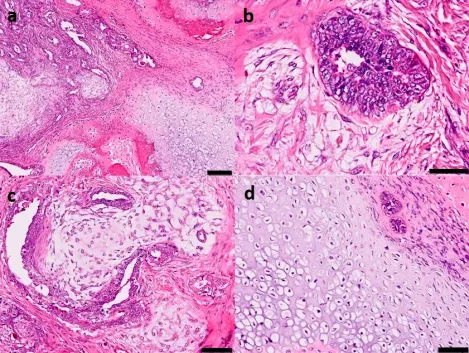Metastatic osteosarcoma as a cause of hemorrhagic stroke in a dog
DOI:
https://doi.org/10.24070/bjvp.1983-0246.v10i3p105-110Keywords:
brain, neoplasia, intracranial hemorrhage, pathologyAbstract
The aim of this case report is to describe an uncommon hemorrhagic cerebrovascular accident (CVA) associated with an osteosarcoma (OSA) metastasis. Cerebrovascular accident (CVA) is the acute onset of a neurological deficit from any change in blood supply resulting from a pathological process, characterizing a stroke and among all the causes, the neoplastic thrombus of osteosarcoma, specifically, is the most infrequent in clinical practice. A seven-year-old female midsize mixed-breed dog was submitted to a forelimb amputation for showing an osteoblastic OSA in proximal humerus. Three weeks later, the patient presented uninterruptible seizure and coma, resulting in death. At necropsy, it was observed a friable and reddish mass in the left frontal cortex which, microscopically was constituted by OSA metastasis in association with multiple ruptures of blood vessels and focally extensive severe bleeding, which caused a CVA. At immunohistochemistry, neoplastic cells of the humerus and the brain metastasis were positive for vimentin and osteonectin, confirming the diagnosis of osteoblastic OSA. The reports about OSA metastasis on the brain are rare in animals and humans, what could be related to the low frequency and few diagnosis ante and post-mortem. As uncommon as the description of OSA metastasis to the brain, is the CVA associated to them, demonstrating that reporting cases related to these clinical and anatomopathological lesions are important for the scientific community.


